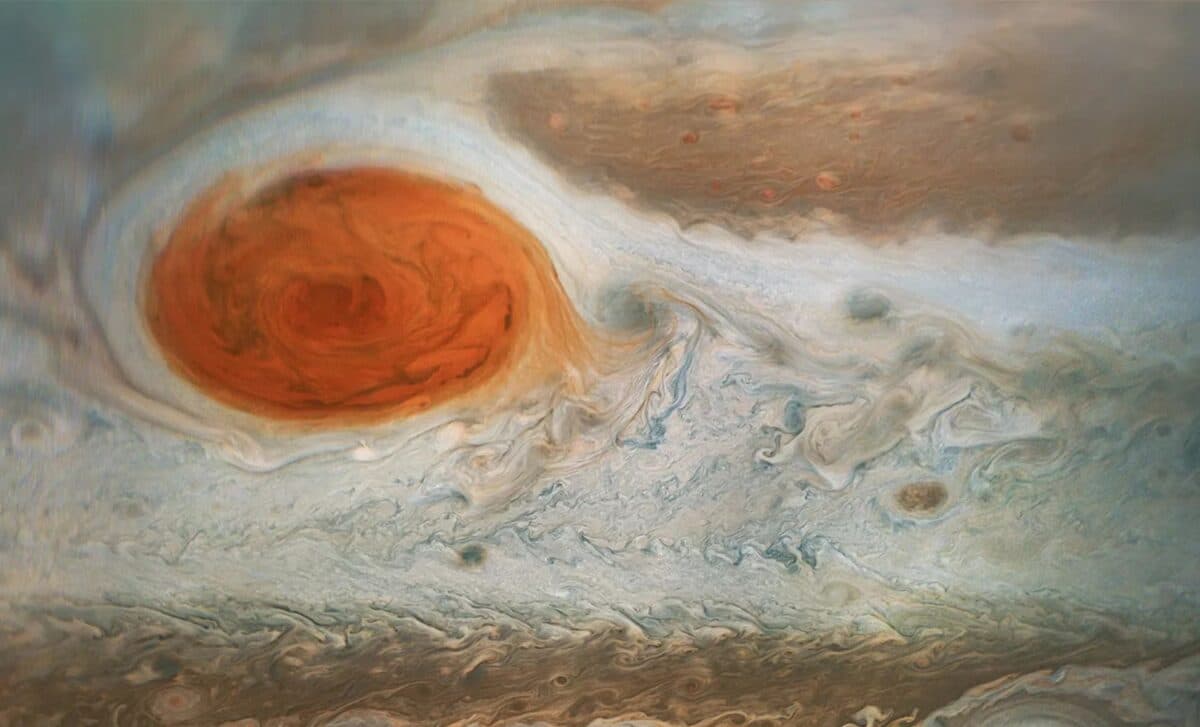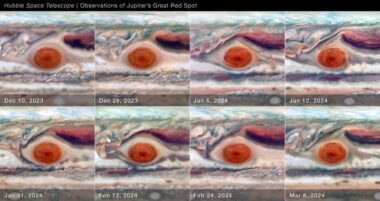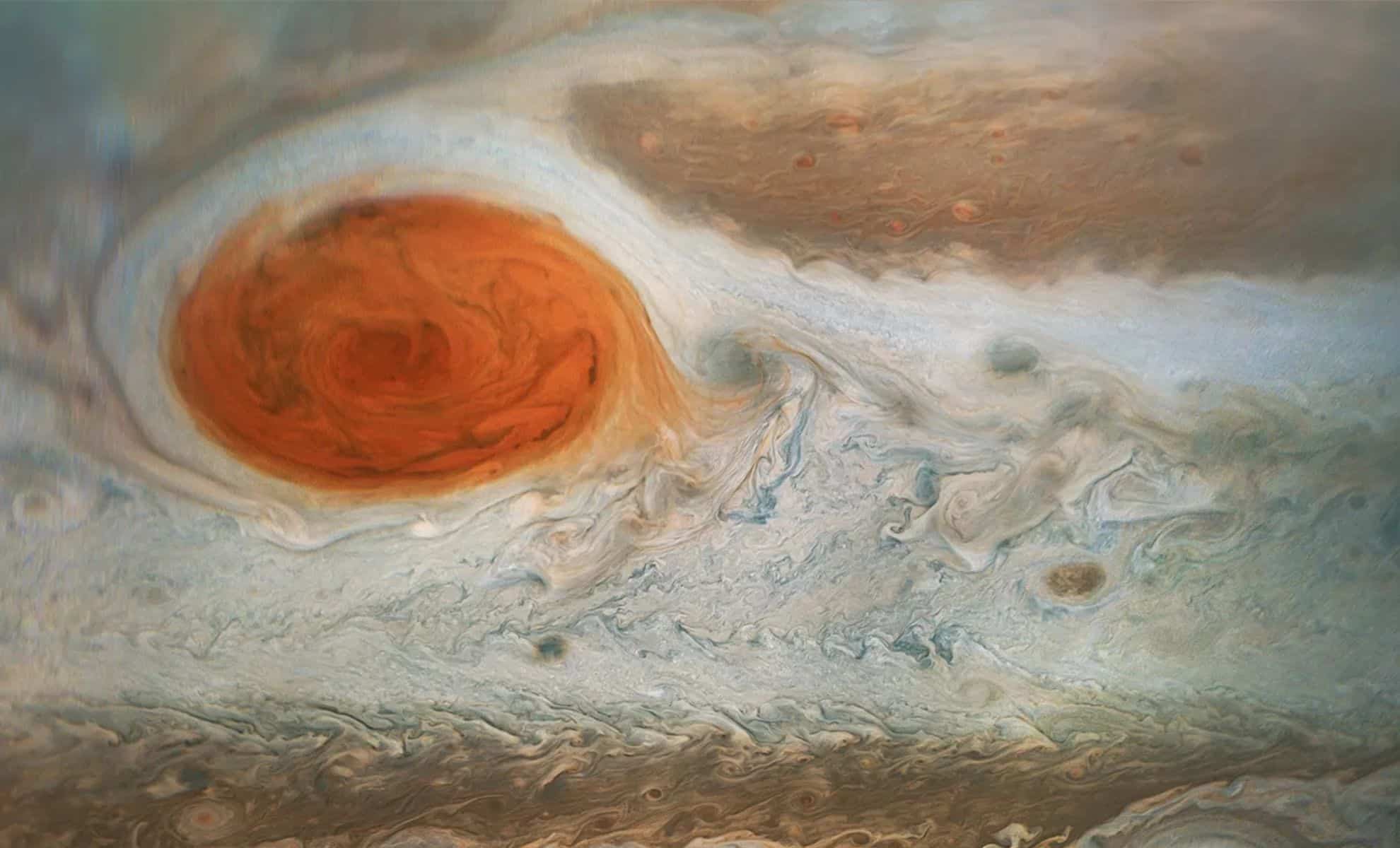Recent observations from NASA’s Hubble Space Telescope have revealed unexpected changes in Jupiter’s Great Red Spot, a massive storm that has fascinated astronomers for over 150 years. Over a 90-day period from December 2023 to March 2024, Hubble captured the iconic storm oscillating in both size and shape, an unprecedented finding that challenges long-held assumptions about its stability.
Hubble Reveals Unexpected Changes in Jupiter’s Great Red Spot

For over 150 years, Jupiter’s Great Red Spot (GRS) has been one of the most iconic features of the solar system. A massive anticyclone large enough to swallow Earth, the storm has been the subject of fascination for both professional astronomers and the public alike. Recent observations from NASA’s Hubble Space Telescope, however, have revealed unexpected changes in the GRS, challenging long-held assumptions about its stability. Data collected from December 2023 to March 2024 show that the GRS is oscillating in both size and shape, offering new insights into the dynamics of this colossal storm.
Oscillation in Size and Shape Surprises Scientists
For decades, the Great Red Spot has appeared as a stable, oval-shaped storm, slowly shrinking but retaining its familiar dimensions. However, during a recent 90-day period, Hubble’s high-resolution images revealed that the GRS undergoes a peculiar oscillation in both its size and shape. Amy Simon, the lead scientist at NASA’s Goddard Space Flight Center, described the storm's unexpected behavior: “We didn’t expect to see the size oscillate. As far as we know, it’s not been identified before.” Simon added that this discovery was only possible due to the unique cadence of Hubble’s observations, allowing scientists to monitor the GRS in unprecedented detail over a continuous period.
The Hubble data shows the storm “jiggling like a bowl of gelatin,” with the GRS squeezing in and out in sync with changes in its speed. This oscillation is most visible in the elliptical shape of the storm, which fluctuates between becoming slightly skinnier or wider during its cycle. This behavior has not been observed before, and it suggests that the storm is far less stable than previously thought. According to Simon, “With Hubble’s high resolution we can say that the GRS is definitively squeezing in and out at the same time as it moves faster and slower. That was very unexpected, and at present, there are no hydrodynamic explanations.”

Interaction with Jet Streams Could be Key
One of the most intriguing aspects of the Great Red Spot’s oscillation is its interaction with the powerful jet streams that surround it. Jupiter’s atmosphere is highly dynamic, with multiple fast-moving jet streams running parallel to the planet’s equator. The GRS is situated between two such jet streams, which play a critical role in shaping its behavior. Mike Wong, a co-investigator from the University of California at Berkeley, likened the interaction to a sandwich: “It’s similar to a sandwich where the slices of bread are forced to bulge out when there’s too much filling in the middle.”
These interactions between the GRS and the surrounding jet streams are likely responsible for some of the oscillations in size and shape. The storm’s size fluctuates in response to changes in its speed, with the storm pushing against the jet streams to the north and south. This interplay between the storm and the winds adds complexity to an already intricate system. As the GRS accelerates and decelerates, it experiences physical distortions that contribute to its gelatinous wobble.
Why Is the Great Red Spot Changing?
Despite decades of observation, scientists still don’t fully understand the forces driving the Great Red Spot’s size oscillations. Jupiter’s atmosphere is a chaotic and turbulent environment, and the GRS itself is one of the largest and longest-lived storms in the solar system. While the recent Hubble observations provide new clues, hydrodynamic models have yet to offer a clear explanation for the storm’s behavior. According to Simon, the team is still searching for the underlying mechanisms responsible for these changes: “At present, there are no hydrodynamic explanations.”
One possible factor could be the overall shrinking of the Great Red Spot, which has been well-documented over the past few decades. Since the Outer Planet Atmospheres Legacy (OPAL) program began monitoring the GRS ten years ago, the storm has gradually decreased in size. Some researchers suggest that the storm’s current oscillations could be a symptom of this long-term shrinking process. As the GRS becomes smaller, it may be more susceptible to distortions from the surrounding jet streams, leading to the observed oscillations.
A Shrinking Storm: What Does the Future Hold?
The Great Red Spot has been shrinking for over a century, and this trend is expected to continue. Astronomers predict that the storm will eventually stabilize at a smaller, more circular size. Amy Simon noted that the GRS is “over-filling its latitude band relative to the wind field,” meaning that as it shrinks, the surrounding winds will play an increasingly dominant role in controlling its shape and motion. Once the storm becomes small enough to fit more comfortably within its latitude band, the oscillations may cease, and the GRS will likely assume a more stable, less elongated form.
This prediction aligns with the storm's shrinking history, but for now, the oscillations present a new mystery. The current observations only captured one complete oscillation cycle, meaning that more data is needed to determine if these size changes are part of a regular pattern or an anomaly. Future Hubble observations will focus on identifying other Jovian parameters that might help explain the cause of these oscillations.
Broader Implications for Planetary Meteorology
The study of Jupiter’s Great Red Spot offers valuable insights not only into the dynamics of the solar system’s largest storm but also into the broader field of planetary meteorology. Understanding the behavior of such massive storms on gas giants like Jupiter helps scientists develop models for weather systems on other planets, both within and beyond our solar system. As Mike Wong explained, the lessons learned from the GRS could have broader applications: “Understanding the mechanisms of the largest storms in the solar system puts the theory of hurricanes on Earth into a broader cosmic context, which might be applied to better understanding the meteorology on planets around other stars.”
These findings highlight the value of high-resolution observations like those made by Hubble. By providing detailed data on the size, shape, and color changes of the Great Red Spot, Hubble allows scientists to draw parallels between Jupiter’s atmosphere and weather patterns on Earth. Future observations could offer further insights into the forces driving the GRS’s size oscillations, contributing to a more comprehensive understanding of gas giants’ meteorology.



